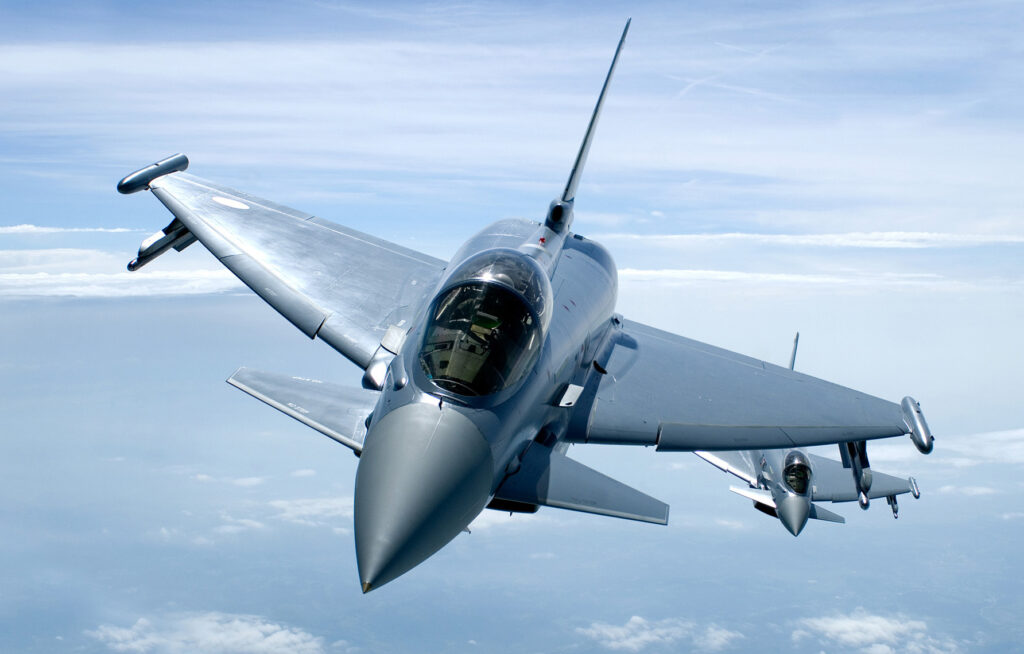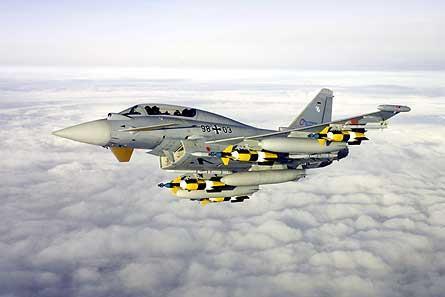
|
||||||||||||||||||||||||||||||||||||

Currently the Eurofighter Typhoon forms the cornerstone of European air power. This multi-role fighter is planned to remain operational well into the 21st century.
Much experience of the type’s main concepts were proven by the BAe EAP technology demonstrator programme of the late 1980s. These concepts include an unstable delta canard configuration, active digital fly-by-wire control system, a HOTAS cockpit and highly capable though complex avionics that even include direct voice command input.
In June 1986 the Eurofighter consortium was formed by Germany, Italy, the United Kingdom and, later, Spain, to develop a new multi-role combat aircraft, optimised as a beyond visual range interceptor with a secondary ground-attack capability. Other consortia have been formed to develop the EJ200 engine, ECR90 multi-mode radar, IRST and advanced defensive aids sub-system (DAAS). DASS comprises an integrated package of missile approach, laser and radar-warning elements together with wingtip mounted ESM and electronic counter measures pods and fuselage-mounted chaff/flare dispensers and a towed radar decoy.
An initial 1988 contract covered construction of eight prototypes (to be built in all of the partner countres). Funding was divided in proportion to the various national industrial participations by respective national requirements.
The first two Eurofighter 2000 prototypes, completed in Germany and the UK as DA.1 and DA.2 respectively, undertook their maiden flights on 27 March and 6 April 1994. These have been followed by six further prototypes (including a pair of two-seaters) that are used as testbeds for the EJ200 engine, ECR90 radar and for avionics and weapons integration. In 1998 the Eurofighter 2000 received the name Typhoon. The first production aircraft rolled out in the second half of 2001.
National requirements being finally settled on in 2000 as a maximum of 297 for the UK, 180 for Germany, 130 for Italy and 103 for Spain. Though procurement numbers were eventually reduced due to limited funding and a lack of threat. United Kingdom obtained 160 aircraft. All of these fighters have been delivered by 2019. Germany obtained 143 aircraft. Italy obtained 96 aircraft. Spain ordered 73 units and is planning to order another 40. This multi-role fighter was exported to Austria (15 units), Oman (12) and Saudi Arabia (72). Kuwait ordered 28 of these multi-role fighters and Qatar ordered 24.
It is claimed that Typhoon is half as combat effective as the American F-22 Raptor. It is an approximate estimate, however it seems that Typhoon is superior to the F-15 Eagle, French Rafale, evolved Russian Su-27 variants, such as the Su-35, as well as many other aircraft.




